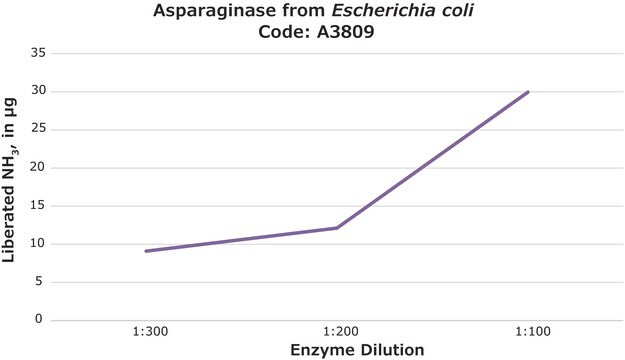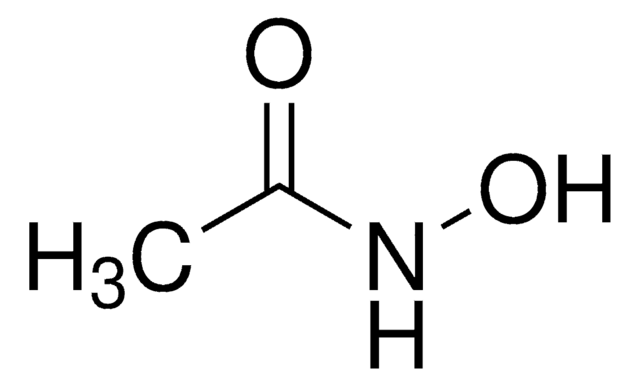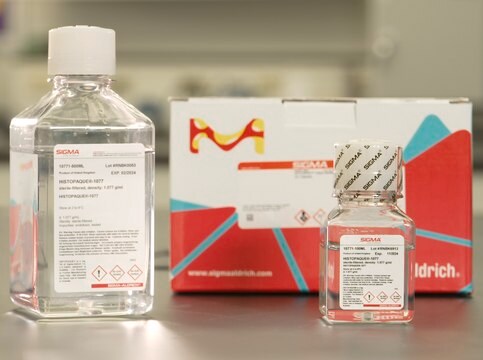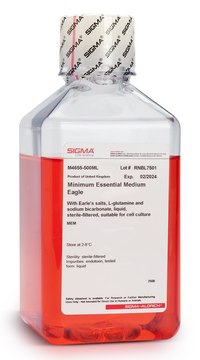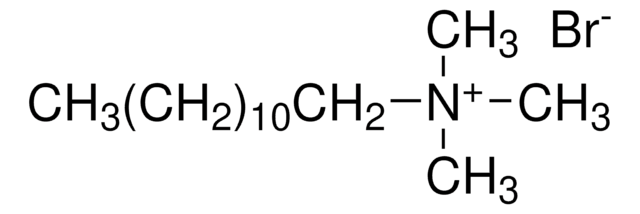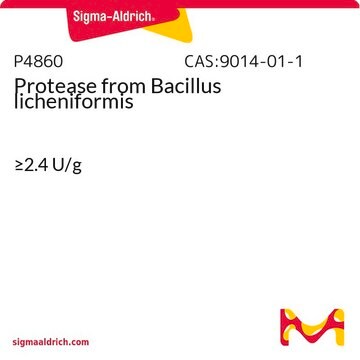Alle Fotos(3)
Wichtige Dokumente
A6508
L-Asparaginsäure β-Hydroxamat
>98%
Synonym(e):
AAH, HDX, LAH
Anmeldenzur Ansicht organisationsspezifischer und vertraglich vereinbarter Preise
Alle Fotos(3)
About This Item
Empirische Formel (Hill-System):
C4H8N2O4
CAS-Nummer:
Molekulargewicht:
148.12
MDL-Nummer:
UNSPSC-Code:
12352209
eCl@ss:
32160406
PubChem Substanz-ID:
NACRES:
NA.26
Empfohlene Produkte
Produktbezeichnung
L-Asparaginsäure β-Hydroxamat, serine racemase inhibitor
Qualitätsniveau
Assay
>98%
Form
powder
Farbe
white to yellow
Anwendung(en)
detection
Lagertemp.
−20°C
SMILES String
N[C@@H](CC(=O)NO)C(O)=O
InChI
1S/C4H8N2O4/c5-2(4(8)9)1-3(7)6-10/h2,10H,1,5H2,(H,6,7)(H,8,9)/t2-/m0/s1
InChIKey
ZBYVTTSIVDYQSO-REOHCLBHSA-N
Lagerklassenschlüssel
11 - Combustible Solids
WGK
WGK 3
Flammpunkt (°F)
Not applicable
Flammpunkt (°C)
Not applicable
Persönliche Schutzausrüstung
Eyeshields, Gloves, type N95 (US)
Hier finden Sie alle aktuellen Versionen:
Besitzen Sie dieses Produkt bereits?
In der Dokumentenbibliothek finden Sie die Dokumentation zu den Produkten, die Sie kürzlich erworben haben.
Kunden haben sich ebenfalls angesehen
N Thomasset et al.
International journal of cancer, 49(3), 421-424 (1991-09-30)
D and L isomers of aspartic acid beta-hydroxamate (respectively DAH and LAH) were compared for their in vitro and in vivo activity against the murine leukemia L5178Y and their tolerance in vivo in DBA/2 mice. DAH and LAH displayed comparable
Jie Zheng et al.
Nature communications, 8(1), 923-923 (2017-10-17)
The vitamin D receptor/retinoid X receptor-α heterodimer (VDRRXRα) regulates bone mineralization via transcriptional control of osteocalcin (BGLAP) gene and is the receptor for 1α,25-dihydroxyvitamin D
Daniel Sepúlveda-Crespo et al.
Nanomedicine : nanotechnology, biology, and medicine, 13(1), 49-58 (2016-08-27)
Hepatitis C virus (HCV) infection is a major biomedical problem worldwide. Although new direct antiviral agents (DAAs) have been developed for the treatment of chronic HCV infection, the potential emergence of resistant virus variants and the difficulties to implement their
Lidia Mingorance et al.
PLoS pathogens, 14(9), e1007284-e1007284 (2018-09-19)
Hepatitis C virus (HCV) infection constitutes a significant health burden worldwide, because it is a major etiologic agent of chronic liver disease, cirrhosis and hepatocellular carcinoma. HCV replication cycle is closely tied to lipid metabolism and infection by this virus
Eric R. Braverman
The Healing Nutrients Within: Facts, Findings, and New Research on Amino Acids null
Unser Team von Wissenschaftlern verfügt über Erfahrung in allen Forschungsbereichen einschließlich Life Science, Materialwissenschaften, chemischer Synthese, Chromatographie, Analytik und vielen mehr..
Setzen Sie sich mit dem technischen Dienst in Verbindung.
